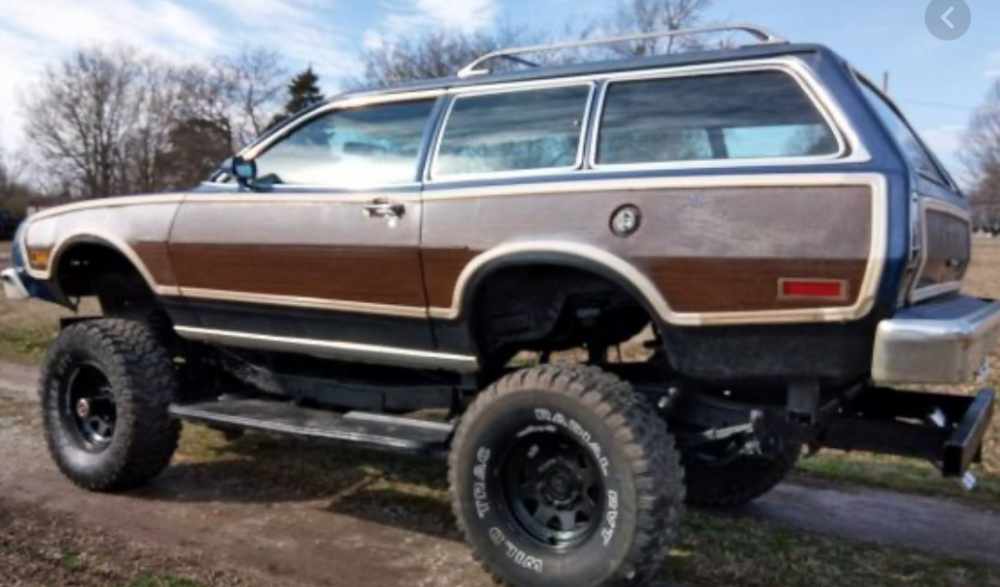
Fritz
Member+-
Posts
224 -
Joined
-
Last visited
-
Days Won
2
Everything posted by Fritz
-
I too asked about electrical diagrams at delivery about a month ago, and was politely told no. And was also told that they change frequently, other trailer manufacturers don't provide them, and most technicians can figure it out. The 2020 and 2021 manuals do have battery wiring diagrams, but not for lithium.
-
Thank you, SeaDawg. I did open a ticket about 2 weeks ago; Jason said he would explore the noisy fan with Xantrex. I'm just wondering if this is an isolated problem, or if others (especially those with the lithium package and 3000W inverters) experience excess noise. Just checked the periodic maintenance-charging noise level (i.e., periodic charging when batteries are full and the fan kicks on about every 15 minutes fo a minute): it's about 50 dB.
-
Have any of you experienced objectionable noise with the Xantrex 3000 inverter? When plugged in to shore power, the continuous sound level from the fan is about 60-64 decibels in the cabin when batteries are charging, and about 72 decibels adjacent to the inverter. Once the batteries are charged, the inverter fan comes on about every 15 minutes for a minute or so. It is an unpleasant (IMO) drone/whine, and appears to reverberate between the hulls. Have any of you experienced something similar? Is this normal? Thanks!
-
Coincidence: I am approximately halfway through James Michener‘s “Texas“ as well. It is fiction, but I feel like I am learning some history as well.
-
Thanks -- I'll ask.
-
I know the Anderson system has been discussed at length for 1/2 ton tow vehicles, but I'm curious how many folks with heavy duty pickups (i.e., 3/4 ton) use the Anderson weight-distributing hitch. Do any of you use it?
-
What DO I need to buy before I pick up Ollie Elite I?
Fritz replied to Moonlight Mile's topic in General Discussion
I am bringing some vinyl to protect the screen door when we pick up the the trailer in 3 weeks (we're coming with dogs). I hope to velcro, rivet, or even temporarily tape it to the screen door soon after delivery. What is the approximate size of the lower portion of the screen door? in advance, thanks for measuring! -
Here is a draft delivery checklist prompted, in part, by comments regarding a recent inverter-mount failure (see below). This delivery inspection checklist began with one used by NCeagle for his delivery, to which I've added items. The list is almost certainly incomplete -- what other items would you suggest to help new buyers? Thanks to Oliver for providing this educational ad-free forum, and to all of you for your forum posts that have contributed to this list. This open-dialogue forum is IMHO a huge asset to the OliverOllie Inspection Checklist (draft 4-9-2021).pdf travel trailer brand. I divided the list into two parts: (1) the actual delivery day inspection and (2) items for further inspection at DCSP. I plan on testing the list in 3 weeks when we pick up Hull 792, and will refine the list based on this experience (and with your additions, suggestions, comments, etc). The list is in pdf form. Once updated, I'd be happy to send out (or post) an xlsx version.
- 24 replies
-
- 13
-

-

-
HOW TO: Lithium Battery Powered Vent System
Fritz replied to John E Davies's topic in Ollie Modifications
Very nice work! Might you be doing some hi-lo temperature measurements on hot or cold days -- I'm curious about the temperature difference this will make. -
Alaska and BC planning for September, need some info
Fritz replied to John E Davies's topic in Campgrounds & Parks
I agree with the previous comments about giving yourself time. We took 8 weeks on our last trip 10 years ago, and it felt rushed. The entire Alcan Highway has now all been paved at some point, and most of it is decent enough. There's plenty of gravel and stones to go around, searching for radiators and windshields, but Neuman describes it as being better now. Even 10 years ago, the road was way, way better than I what I encountered on my first trip in 1973 hitchhiking to Alaska. At that point the last 1,500 miles were dirt and gravel, and the road had many arbitrary curves (so that the Russians couldn't take out a straight-line convoy). The road has been shortened 32 miles by just taking out curves. And the road was much smoother on the return trip in December, when everything was frozen. My return ride (an old Toyota Land Cruiser with canvas roof) was towing a utility trailer; an axle broke near the Yukon-Alaska border. We laid the trailer on the wheel (which we positioned flat on the highway) and drug it over the ice to the White River Road House, where we removed the axle and drove 250 miles to Whitehorse to get it welded. Temperature while removing the axle? minus 64 degrees F. But that's another story. The road to McCarthy, as others have said, is washboarded, but fine if you're not in a hurry. It was once an old railbed, the last 8 miles of which was built across the Kennecott Glacier to the mine site; this section had to be rebuilt every year as the glacier moved. We saw old rail under the gravel in a couple places, and were looking for spikes, but saw none. They apparently kick up when grading the road, and we certainly didn't see graders. We left our canoe trailer at a campground, but made the trip in the Sprinter van -- no problem. I'd allocate at least a week, preferably at least 2 weeks, for the Wrangell-St. Elias and Valdez portion of the trip, so that you'll have a better chance to experience at least some good weather (this applies to Denali as well). The Wrangell-St. Elias (American) with the adjacent Kluane National Park (Canadian) has 9 of 16 of North America's tallest peaks, and glaciers larger than Rhode Island. You can't see it all from McCarthy (you can't see it all from anywhere, really, except perhaps by plane), but you might enjoy area more if the weather is good. And more days gives you a better chance for at least some good weather. The mine site is really cool, and has a fascinating history; this was, after all, the start of the Kennecott Mining Company. Another example of why extra time is good: we couldn't even get into McCarthy via the footbridge because of bears on the footbridge-- we simply had to wait. I liked the area around Valdez -- we rented see kayaks and paddled out into the bay, and, with a group of friends, rented a larger boat to go out 40 miles to see whales and glaciers calving. Incredibly memorable. I don't recall seeing people hiking with long guns here (or anywhere for that matter, including on a Kenai backpack trip), but everyone is carrying at least bear spray. And folks have rifles in vehicles and on 4-wheelers. In my experience, bears in rural areas are a bit safer, especially if they haven't learned to associate people with food, and if you don't surprise them. Bottom line: there's lots of areas in northern BC and the Yukon to explore and be away from crowds (along the Cassiar Highway is a prime example, or along the northern portions of Kluane National Park). Take a kayak or canoe, if you can; there's lots of places to paddle around in the evening for a few hours. I'm sure you'll have a great time in however long you have for the trip, but I'd encourage you to take as much time as you possibly can. -
2,000 watt inverter vs 3,000 watt inverter
Fritz replied to Fritz's topic in Mechanical & Technical Tips
The short answer is that I did not find out earlier. The longer answer is that the 2021 "Optional Feature Manuals" in the Oliver University files include manuals for both Freedom XC (which covers 1000W and 2000W inverters) and a Freedom XC Pro (which covers a 2000W and a 3000W model). From this I'd infer (although perhaps incorrectly) that Oliver offers the 2000W Freedom XC (for AGMs) or the 3000 XC Pro (for lithiums) -- and that is why they include both the XC and XC Pro manuals. FWIW, I ordered the lithium package (and therefore the 3000 XC Pro), and am hoping that they get the error code issue resolved before I pick up the trailer in late April. Hope this helps... -
Tank Monitor “sht” error code
Fritz replied to Moonlight Mile's topic in Mechanical & Technical Tips
Couldn't agree more! Hopefully as winter turns to spring and the weather turns nice you (SherMica) will find some humor in at least some of your experiences -- experiences from which the rest of us can learn. -
I too appreciate that the forum has been open to non-owners. I've benefited immensely from the information that has been posted over the years, and from your willingness to answer questions (both on the forum and via PM) as I prepared our build sheet. Thank you to Oliver for hosting such a clean site, to you (the participants) for your ongoing contributions, and to the moderators for many hours spent keeping the forum friendly and on track. Now, back to the thread ... Stock Pinto? -- perhaps not so much. But what about a slightly modified version?
-
Zarcor tinted window and blind install 2020 OLEll Hull# 634
Fritz replied to Patriot's topic in Mechanical & Technical Tips
Nice job! This mod will be high in my list later this year... -
SeaDog — this is a very clever solution; thank you for posting it. And thank you, John, for the tip about electrical conduit instead of PVC.
-
Question about no-microwave option on the smaller Oliver.
Fritz replied to cbrucecampbell's topic in General Discussion
A couple of weeks ago I was told (I think) that the dimensions are 20" wide, 14" deep, and 12" high. These are a bit different than the dimensions listed above (although perhaps I wrote them down incorrectly, or perhaps what I was given was very approximate). We too are skipping the microwave; a small toaster oven and/or small Instant Pot (for oatmeal, soup/stew, and perhaps fresh bread) will be more useful for us (at least when plugged in to shore power). Apparently Oliver is discontinuing the option for omitting the microwave, as only about 10% of buyers have chosen to do so. Hopefully there will be an outlet, or at least an outlet that can be reached fairly easily. The cabinet door, I was told, hinges on the bottom. -
On 2/19/2021 at 8:28 AM (under the thread "Length of Sewer Pipe Extension Needed," John E Davies suggested (in regard to dust at the back of a trailer) that "Vortex generators would help a lot, but only if you never slowed below 30 mph😬." Have any of you installed Airtabs on your trailer and/or TV? If so, what was your experience? Less dust? Noticably better fuel mileage? Other?
-
If Oliver would go back to installing a two-inch receiver on the back bumper then a person could use a standard hitch propeller. Steering? Well, perhaps from the flying bridge up on the solar panels. Stability? Someone (John Davies?) would have design and fabricate a keel to attach between the mudflaps. Sideways propulsion while docking? — perhaps the outdoor shower?
-
The Lithionics rep told me that Lithionics makes a 315 AH battery specifically for Winnebago. But for wiring, two of these (for 630 AH) would theoretically fit into the LE2 battery tray. But from what I understand from Oliver, with wiring: no go. Might something will change in the future? -- who knows. This battery size would support (or even beg for?) a larger solar array. Cha-ching, cha-ching 🤑.
-
I think that Oliver is now using two Lithionics 130 amp-hour lithium ion batteries in the LE1, for a total of 260 AH (in the LE2, three 130 AH batteries for 390 AH total) as part of the lithium package. The lithionics batteries have a charging range of 32°F to 113°F, and a discharge temperature range of -4°F to 113°F. Acceptable temperature ranges for long-term storage are a bit more constrained (https://lithionicsbattery.com/wp-content/uploads/2019/02/Lithionics-Battery-Storage-Procedure.pdf). The batteries can handle a wider range of temperature when in use (e.g., when traveling) than in long-term storage. My understanding (from what I've read; we do not have our trailer yet) is that you can draw from the batteries below freezing, but charging them requires heating below 32°F. If charging with solar, then all solar gain goes first to the 12V heating system and any excess goes to charging the battery.
-
Legacy Elite 2 buyer has questions about upgrades
Fritz replied to Fargoman's topic in General Discussion
Susan, like you, I'm interested in a mildew-free awning (while we live in a more arid climate, we spend a fair amount of time in the moister northwest). I'm wondering if you recall precisely why Girard suggested that the vinyl material would be more mildew resistant, or perhaps the vinyl is better at shielding rain? I would prefer the lower cost of the standard awning, but I (perhaps mistakenly) understood from a Girard representative that the Sunbrella fabric is better in moist areas, because it is breathable and can dry out. Thoughts? From anyone? Thanks, Fritz -
Does anyone have the interior dimensions of the microwave-replacement cabinet? I've searched the forum, but couldn't find this (perhaps incorrect search terms?)... Thanks!
-
Ram Multifunction tailgate (barn doors). Useful?
Fritz replied to John E Davies's topic in General Discussion
The appeal of the split tailgate to me is also the ability to close the tailgate more easily when inside (when camped with just the truck and no trailer). The shell window/door is easy enough to close when inside, but a regular tailgate -- even a damped one -- is much more difficult. Our current truck has a shell with double doors (i.e., no tailgate), but going this route with a newer truck eliminates the factory-installed tailgate camera system, which is too useful to eliminate. -
Ram Multifunction tailgate (barn doors). Useful?
Fritz replied to John E Davies's topic in General Discussion
We’ve gone ahead and ordered this year’s HD, but there are 2 things I wish it had: a telescoping steering wheel and the multi-function tailgate. I think this tailgate would make it so much easier to climb in and out of the back. I would have gone for it in a heartbeat if it were available.




